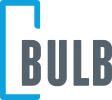
Could call deflection to be the key to a more effective customer service strategy?
Many experts think so. We live in a world where customers have higher expectations than ever before when it comes to speed and quality of service.
Your customers want their questions resolved as quickly as possible and with minimal hassle. They also want to ensure that they can engage with the brands they love through their chosen channels. This puts significant pressure on companies to develop more comprehensive and flexible CX strategies.
Unfortunately, many brands are already struggling with increased call volumes, high turnover, and the complexity of adapting to new technological changes. Fortunately, call deflection could provide an effective solution. Here’s what you need to know.
What is Call Deflection? An Introduction
Let’s start with the basics. What’s call deflection?
Call deflection is a customer service technique that diverts incoming customer calls. Meaning the calls are diverted to other channels or the number of calls reaching the agent in the first place is minimized. At first glance, this may sound like you’re simply trying to ignore customers who contact you. However, that’s not the case.
Rather, call deflection is about directing customers to the most efficient and effective service channel so you can resolve their issues quickly. You can reduce call volume by offering self-service support to your customers, and minimize the burden on your staff.
For example, by offering self-service applications to your customers, you can reduce the number of calls your staff has to handle, provide a more convenient and faster experience for your customers, and reduce costs.
How Does Call Deflection Work?
There are several ways to implement call deflection, often distinguished by their active or passive nature.
For example, implementing a self-service system into your organization’s CX strategy is a more passive type of call deflection. When users have more options to immediately resolve issues on their own, for example, by visiting customer portals, FAQ, or talking to a chatbot, they don’t have to call your customer service team to get help.
Companies can even set up self-service portals where customers can solve problems themselves and troubleshoot common issues on their own.
The alternative is a more proactive approach, using intelligent IVR and automation systems to send your customers to another channel when they contact your company. This means that customers have the option to switch to another communication channel if they’ve to wait on hold. Some of the strategies that businesses can use when implementing call deflection include:
Take a Proactive Approach
One of the easiest ways to make the most of call deflection is to proactively provide your customers with all the information they need to resolve issues without your help. Automated onboarding workflows, customer portals, and troubleshooting solutions allow users to easily log into an account and resolve issues themselves.
With a proactive approach, you are less likely to face a flood of calls during high-demand periods because your customers already know they have alternative options for getting assistance. To get the most out of this strategy, you need to develop an understanding of the issues your customers typically face so you can provide answers to their questions.
Redirect Customers to Self-Service Channels
Alternatively, you can wait for customers to call you and offer them a way to be referred to other methods of resolving their issues. For example, you could set up an IVR system that tells your customers how long they’re expected to wait for an answer, and then offer them options such as:
- Talking to a virtual agent
- Using an online customer portal, knowledge base, or guidebook
- Using a chatbot to solve a problem
- Submitting a case of sending an email to customer service
- Scheduling a callback
This can be a great way to improve customer service by giving your customers more control over the type of service they receive. In today’s world, where customers are less and less willing to just sit around and wait for an answer, they’re happy to have options available to them.
Use conversational AI as a triage
Another option is to use an AI system to handle more requests from your team. That is, when someone sends a message to your company or calls you, they first talk to a virtual assistant.
The virtual agent can ask general questions about the topic of the conversation and then offer solutions to the problem that the customer may not have considered. Today’s businesses try to deflect about 90% of calls using similar strategies.
The best conversational AI solutions use natural language processing and understanding techniques to determine the purpose of a call and provide intelligent solutions. These tools can even work with automated workflows to complete common tasks. For example, you could use a virtual agent to allow your customers to check their account balance or renew a subscription.
If the issue can not be resolved by a bot, the service can offer your customers several options for talking to a human. In either case, this increases productivity because the agent gets insight into the call’s concern from a bot as soon as they pick up the phone.

The Benefits of Call Deflection
Call deflection is quickly becoming one of the most important tools for overworked customer service teams struggling with severe labor shortages. With an effective call deflection strategy in place, companies can achieve a number of benefits, including:
- Better Customer Experience: In today’s fast-paced world, every customer wants a smooth and convenient customer experience. Immediate answers are the most important factor for customer satisfaction when they have a question about service. Call deflection allows customers to spend less time waiting for their issues to be resolved. Consequently, customer satisfaction is increased and churn is reduced.
- Easier conversation management: The right call routing strategy often involves combining multiple tools into an omnichannel customer service environment. This makes it easier to manage all types of conversations on the backend of your business. You can track the customer journey this way, prioritize specific calls, and make sure employees have access to the information they need to resolve customer issues quickly.
- Business productivity: Call deflection is a great way to relieve pressure on your teams. By routing more calls to automated apps and chatbots, you can reduce the number of calls your employees have to make each day. That means they can spend more time on important tasks. With automated systems that provide agents with information about a request, when a call is routed from a bot to an agent, it also reduces the time spent trying to find the root cause of the problem.
- Reduced customer support costs: Aside from giving agents more freedom to focus on advanced customer issues, you can also reduce the number of agents that typically need to be available in a call center. Implementing a call deflections strategy will reduce the number of inbound calls and help you keep costs to a minimum. Chatbots and automated systems are surprisingly cost-effective.
- Reduced employee turnover: Less pressure on your employees and a better overall work experience. This also leads to lower turnover in the workplace. Team members are happier at work and more comfortable in their roles. By using the right call deflection strategies, you can improve your chances of retaining the skilled workers you need.
Time to Invest in Call Deflection?
Call deflection is an effective and powerful way to reduce call center volume and load in any industry. Make business more efficient and productive while improving the speed at which can resolve common problems with the right strategy.
Implementing an effective call deflection strategy will give you more options to run your business as effectively as possible. Contact Bulk Tech today to learn more about the call deflection methods you can implement.
Ready to deflect calls and reduce load on your agents?
Contact us and increase your CX, EX and efficiency wit Cempresso



